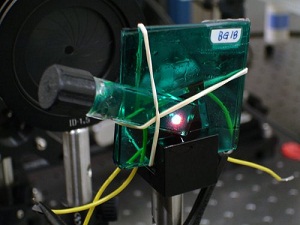Solar3D finalizing prototype designs for potentially record-breaking PV technology
 Solar3D, Inc.’s technology promises silicon-based, single-junction photovoltaic cells that can reach an efficiency level of 25.47 percent. The company’s tests show that the prototype is more efficient than the most efficient silicon PV on the market today, SunPower Corp.’s Maxeon cells, which are at least 22.4 percent efficient at converting sunlight to energy.
Solar3D, Inc.’s technology promises silicon-based, single-junction photovoltaic cells that can reach an efficiency level of 25.47 percent. The company’s tests show that the prototype is more efficient than the most efficient silicon PV on the market today, SunPower Corp.’s Maxeon cells, which are at least 22.4 percent efficient at converting sunlight to energy.
Solar3D’s design also pushes toward the theoretical maximum efficiency of single-junction silicon PV, which is at about 29 percent efficient.
“Nobody’s going to reach 29 percent, but this is close,” said Solar3D CEO Jim Nelson.
The company is among those that are working to change PV cell design in an attempt to capture more photons with light trapping. But the company’s approach increases each solar cell’s surface area at the nanoscale, whereas many other attempts focus on the optics of a PV cell’s surface.
With a new series of tests complete, the company will start developing complete prototypes in the coming months, according to Nelson.
“We’re in the process of developing the complete solar cell,” said Nelson. “But it’s not together yet.”
The company has fallen behind its planned prototype completion date.
“Originally we had hoped to have it done by the end of the year. We kept fine-tuning the design,” Nelson said. “We’d like to say it will be done this quarter. More likely it will be done in the second.”
The company has spent most of its efforts in boosting the efficiency of such a device as high as possible.
“We’re not in a huge rush to get something great out to market,” Nelson said.
The company’s first prototypes will be developed at the laboratory that it shares with the University of California at Santa Barbara.
However, the laboratory is limited, and the final prototypes will be built at a potential manufacturing partner’s facility that could mass produce the devices. When the device prototypes are developed, they will be verified by an independent test, according to Nelson.
Image courtesy of NREL.



